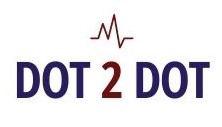Complexity of managing an indirect channel.
The complexity of Channel management is strictly linked to what it tries to manage. The meaning of management describes a sort of control to achieve the expected results from an individual, a team or another entity such as an indirect channel. The type of management can be inspirational or enforced. The meaning of management can be different depending on the type of organization we are; a startup, a mature company or a governmental organization like the military, however in all of them there is a relationship between the manager and who will need to be managed. The indirect channel environment and network partnership are quite different and face various daily challenges that could be summarized as below.
Entity or people? Management: we associate this word to a sort of control on employees, consultants or contractors. If this word is applied to an indirect channel, the type of control that the manager can have is definitely weaker because the real management you will put in place will not be on the indirect channel sales force. You will manage the relationship between two companies, not the people. The distributor appointed surely will be made up of people; sales, technical, marketing etc. but the reality will be that you will trying to manage an entity rather than individuals. At the same time you will need to manage all your internal stakeholders to ensure that all the processes are accurate to achieve the expected performance from both parties. That’s an important difference that creates a huge amount of complexity.
Accountability and risks: In a direct business model, usually, the organization structure, ita segregation of duties policy and its hierarchy ensure that a management and control process is in place, however talking about indirect channel the reporting relationship is indirect. In most of the time if the target of the business partner is not achieved, companies are often reluctant to immediately replace the local vendor due the difficulties to find a replacement one this will happen slowly in a mid-long term period after maybe another year or more generating most of the time a slowdown in revenue. Terminating a distributor could also have higher risk that a simple reduction in sales, in fact the termination of the partnership, if managed smoothly could become a win win situation for both parties however if the end of the partnership will be conflictual the risks for both parties are quite big. A manufacturer could face the total stop of the importation of its products in that country loosing not only the revenue but its footprint that will need to be rebuilt once the importation will receive a green light to be done. On the other side of the medal also a local vendor could face a huge risk, which is related to the future due diligence process it will need to do to get another multinational supplier. Due diligence report could describe the local supplier as a trouble maker, a partner that has pending law suit with other multinational and this could invalidate any further discussion on a future partnership with a new manufacturer letting the local vendor been black listed.
Is my priority also your priority? In the relationship between a manufacturer and a local distributor might often be misaligned. A different fiscal year between the parties might bring frictions between the parties in terms of orders and shipment requirements. As well as the products identified by the local vendor to penetrate the market could be different, actually often is different, from a global strategy. So it is fundamental for a manufacturer to understand what are the priorities of the local partner instead of pushing programs campaign that are not align with the local requirements and end user needs.
The partner “Caste”: Having different partner require adopting different engagement models. Vendors could have business with large organization such as procurement governmental entity or small and medium size customers. For a manufacturer been aligned with the different needs of the various partners is challenging and should require a customized strategy depending on the partner. Companies use to roll out local initiatives that most of the time are aligned with the needs of the biggest partner needs, therefore in many other markets these initiative will not have a real impact on Sales. Said that, partners are managed differently and the main variable to differentiate them is the revenue they bring. Higher is the contribution in the vendor’s revenue, higher is the importance the manufacturer gives to the vendor. For a manufacturer the alignment of the appropriate level of investment with a high volume/value and executional partner vs low volume/value and passive partner is critical. A misalignment on that could easily lead to a loss of focus in the channel management process.
Transparency: Let’s be honest, the relationship between a manufacturer and its local vendor is financially driven. One of the biggest mistake within the partnership between a manufacturer and a local partner is mainly related to a foggy communication and a lack of in market information. A partnership is built on trust. Once a partner is open to share his value chain and in margin for a manufacturer is very easy to build up a pricing strategy that could lead to a win - win situation instead of procrastinating a long term battle that will might lead to a vendor termination. On the other side of the medal the vendor need to understand that the manufacturer has all the interest that its partner is able to gain the highest level of profit in alignment with the manufacturer one. This will not only increase the loyalty between the parties but will also bring a continuous push and keep a long term momentum on the revenue growth.
Competencies: Rarely both the manufacturer and the local vendor use to sell one type of product. The business focus by the manufacturer and by the vendor needs to be aligned through deep competencies to ensure a future success.
Forecasting: Forecasting requirements is a never ending story in a partnership between manufacturer and a local distributor. While from a supply chain point of view the forecast is needed to ensure the production of the goods required from each local markets, internally, or better in the sales department of the organization of a manufacturer the forecast is often considered a commitment from the local distributor. This perception will continuously lead to a lack of forecast from the local distributor who is not willing to commit. In some situation the vendors will provide you the forecast but in most of the time it won’t especially in the scenario where the local vendor used to send bulk orders. Is the solution creating a sustainable business splitting the orders more consistently in months or quarters? Maybe yes..... theoretically, but even here the complexity of channel distribution become more evident. How are the incoterms with the local vendor? Is the local vendor responsible for the shipping in to the market of the goods from the manufacturer facility? If this is the case, you will not succeed in spreading the potential single bulk order in multiple orders scheduled monthly. Receiving forecast from a local vendor might be the biggest challenge an organization could face. All the pre-sales department of your organization and the local vendor should agree and come out with a user friendly forecasting model based on sales job practice rather than a complex supply chain excel file. Understanding various types of partners, their own sales velocity and the mix behind that velocity is critical. Without proper systems and processes in place, it is incredibly difficult for vendors to come up with these forecasts. The above mentioned channel management challenges are present in every indirect channel partnership. Other challenges vary from market to market and are basically differentiated by the local ecosystem, the maturity and the transparency of the vendor and the business potential.
Is there a way to improve this partnership?
A common channel process that can be easily customized for your specific local partner based on competencies, product mix, local ecosystem and the organization structure could reduce the wast of resources that we are commonly witnessing in both parties involved in the common goal to growth each other business.
Did your Organization ever asked itself or its partner or better its end user customer “is it easy to do business with us?” If your Organization did it, you might have had the answer and you worked on it.
In some other cases you might had the answer but you lost focus on deploying a plan to resolve challenges that are perceived as perpetual.
If your Organization never asked that question, well, I will spoil the answer easily “NO is not easy to make business with you”.
Lean the way to do business is the main element that both the manufacturer and the local vendor will rise and often the lens is going to fall on the account manager of the indirect channel, the manufacturer supply chain, the forecast etc. your organization and your local vendor need to arrive a solution to ensure a prosper future business. Automation in the corporate world is quite common as well as direct sales force management program.
The IT market offers also programs that could lead in future successful partnership such as the PMM (partner marketing management) solution.
The actual market offers also other options.
DOT 2 DOT is a solution in the Indirect channel management process. 20 years of experience been the trade union between a manufacturer and a local vendor is a value added in your future plans.
DOT 2 DOT focus is to reduce this complexity being “super partes” to ensure a mutually beneficial partnership and a full transparency that will lead to the common goal…. growth. The interaction with your local vendor will not have its peak in the annual sales meeting,
DOT 2 DOT will ensure that the energy and the momentum after the annual sales meeting celebration will still be felt by your indirect channel and its team. The channel management universe is definitely complex however if the process is well done it can become a huge asset.
DOT 2 DOT could represent the asset for your stakeholders KPI ensuring revenue growth, cost reduction, planned manufacturing activities leading to an increment in the end user satisfaction. The life cycle of a partnership between a manufacturer and a local distributor present daily challenges that if not transparently managed by both parties will probably end.
DOT 2 DOT experience and network will allow to replace a vendor if required or through a deep dive in the indirect channel management processes will propose to both parties’ mitigation action to increase the loyalty and the partnership for a longer time.
To know more about please contact info@d2dnet.com .







